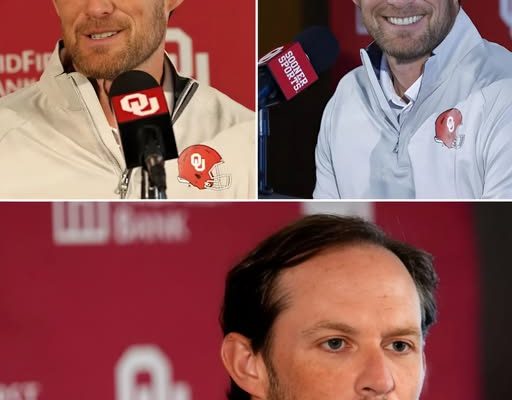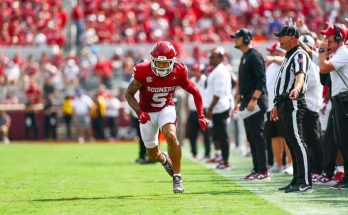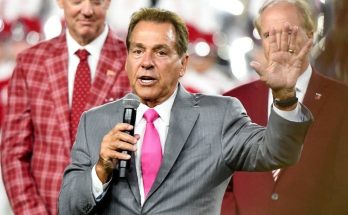Jim Nagy, the newly appointed General Manager for Oklahoma, didn’t mince words after the Sooners were overlooked in the preseason coaches’ poll for the first time since 1999. In a landscape where tradition meets expectation, the Sooners’ absence from the Top 25 was a seismic jolt to fans and insiders alike—a reflection not of reputation, but of unfinished business. Yet, rather than accepting that verdict in silence, Nagy leaned into the moment, fanning the flames of scrutiny by pointing not to past glory, but at the raw, remade substance of this team. “Few things more meaningless than a fall camp depth chart,” he declared on X on August 4, 2025—a terse but pointed indictment of complacency and prediction in equal measure EssentiallySports. It was a message that felt less defiance and more provocation: confidence born not of hope, but of calculated readiness.
The context couldn’t be sharper. Oklahoma’s debut season in the SEC ended in a dispiriting 6-7 record, emblematic of an offense that flailed through 2024—ranked 126th in yards per game and 110th in scoring—a performance that would exhaust even the most patient fan base EssentiallySports. With the conference’s elite looming—Texas, Georgia, LSU, Alabama—the harshness of the path ahead only magnified the sting of being left out of the preseason rankings. And yet, inside Norman, the air was tinged less with despair and more with determination.
If the depth chart is meaningless, the roster—Nagy insists—is not. Under his stewardship, the Sooners have undergone a sweeping overhaul, reassigning value to every position. He stole John Mateer, a red-hot quarterback from Washington State who threw for over 3,100 yards and 29 total touchdowns last season, from the Pac-12’s arsenal. He tabbed Ben Arbuckle as offensive coordinator. He plundered the transfer portal, adding Premier weapons like Pac-12 rushing champ Jaydn Ott. And perhaps most audaciously, Nagy led a wholesale rebuild of the offensive line—an urgency matched only by the team’s potential pain points EssentiallySports.
The trenches are now a battleground. Receivers and tight ends jockey for relevance. On the offensive front, veteran tackles Jacob Sexton and Logan Howland face formidable threats in freshman phenom Michael Fasusi, alongside transfers Luke Baklenko and Derek Simmons. At guard, Heath Ozaeta, Febechi Nwaiwu, and Eddy Pierre-Louis are scrapping for meaningful reps. At center, Troy Everett’s hold on the starting nod is being tested by Stanford’s Jake Maikkula. Across the lineup, it’s not enough to have talent—you must prove you belong at every rep EssentiallySports.
This isn’t just roster maintenance. It’s a camp stripped of entitlement, a crucible molded for a rise. By declaring depth charts irrelevant, Nagy denied the narrative that the past determines the future. This is more than a roster; it’s a living argument that the Sooners are not just back, but better—and they’re proving it.
He didn’t stop there. On another front, he said the program now looks like “an NFL player in every position group,” cementing his claim that Oklahoma is no longer built for the Pac-12 or Big 12—but for the SEC grind and the professional future that follows AtoZ Sports. That’s not bravado—it’s a forecast. Few college programs talk about positional NFL talent with such overt blueprinting, and Nagy is drawing a direct line between roster composition and professional pathways.
The Coaches Poll might have snubbed them, but that doesn’t mean the rest of the world has. The Sooners’ schedule—already branded the toughest in the nation by ESPN—won’t hand them mercy. Eight bowl-caliber opponents, two College Football Playoff teams, and an Alabama squad seeking revenge serve as a gauntlet rather than a soft launch EssentiallySports. That scrutiny could make or break them. Yet a renewed sense of purpose is evident. Baker Mayfield—still an icon in Oklahoma lore—asserted that Mateer reminds him of his own playing style. That kind of endorsement, from the man who carried this program to championship heights, is more than symbolic—it’s a vote of faith.
All of this forms the architecture of Nagy’s retort to the preseason poll: reels of revision, fire-forged depth, and a front line built to withstand SEC storms. By confronting the snub with quiet ferocity, he transformed a narrative of doubt into one of defiance.
There’s still more to prove, of course. Depth charts don’t matter—but what those players deliver come season opener will. The offensive unit must translate its stats and hype into cohesion. The O-line must anchor a unit that last year struggled to protect. The QB, Mateer, must do more than just hit targets—he must lead an offense fighting for identity. Defense must hold fast and rise again under pressure. The transfers must assimilate. The newcomers must thrive. If they can, they won’t just flip a script—they’ll rewrite the script for Oklahoma’s future.
And in the quiet burn of this fall camp, that rewrite is already underway. In his tweet, Nagy implied that who you are in August and who you become by November are not the same. That the depth chart is not destiny. That every name next to a number can be reassigned—or dismissed—based on merit coming out of this dry run. That belief, and more importantly that execution, is what’s missing from last year’s story.
In the end, Jim Nagy didn’t just fire back at the naysayers. He grabbed the microphone, reassembled the team, lit the fuse on national expectations, and told everyone watching that Oklahoma’s return isn’t up for debate—it’s on the clock.



